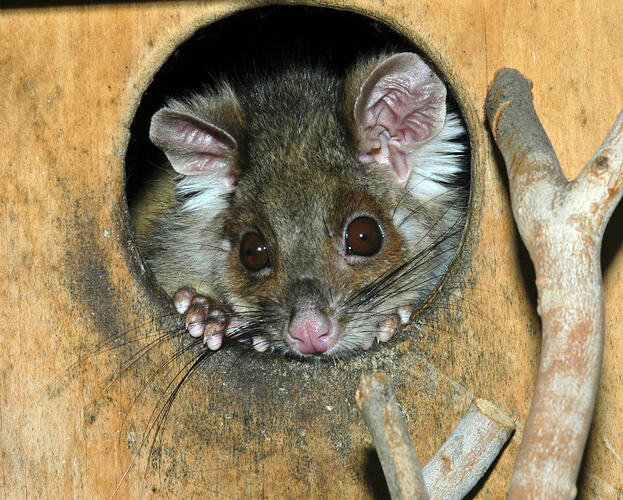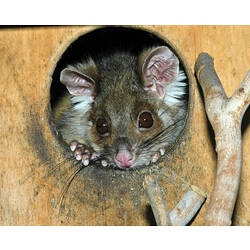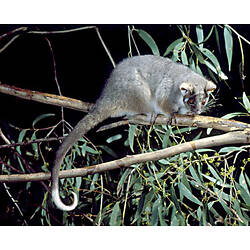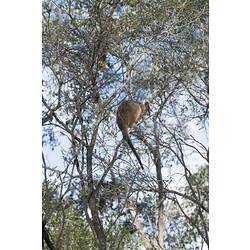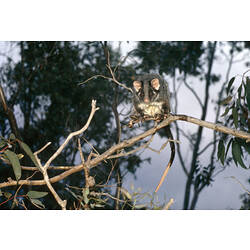General Description
Body fur colour variable, but usually grey-brown above and white underneath. Coiled tail with a white tip. Body up to 38 cm, tail up to 38 cm. Call a bird-like "chirping" sound.
Biology
Common Ring-tailed Possums are mainly solitary but sometimes form small family groups. At night, they forage for leaves, flowers and fruit, using their tail to grip branches as they move. The Common Ring-tailed Possum is the only species of possum where males help care for young. They are also the only species of possum to build a nest, called a drey. This is a large ball of small branches, grasses and leaves in the crown of trees.
Distribution
Eastern mainland Australia and Tasmania.
Habitat
Range of areas, including forest, coastal scrub and suburban places.
More Information
-
Animal Type
-
Animal SubType
-
Brief Id
Nocturnal possum usually seen in the branches of treest. Their tail is curled, lightly furred and has a long white tip.
-
Colours
Grey, White, Brown
-
Maximum Size
38 cm
-
Habitats
-
Where To Look
-
When Active
Nocturnal
-
Diet
Herbivore
-
Diet Categories
Fruit, Plants
-
Endemicity
-
Commercial
No
-
Conservation Statuses
CITES: Not listed, FFG Threatened List: Not listed, EPBC Act 1999: Not listed, IUCN Red List: Least Concern
-
Taxon Name
-
Scientific Author
(Boddaert, 1785)
-
Common Name
Common Ringtail Possum
-
Kingdom
-
Phylum
-
Subphylum
-
Class
-
Superorder
-
Order
-
Suborder
-
Superfamily
-
Family
-
Subfamily
-
Genus
-
Species Name
peregrinus
